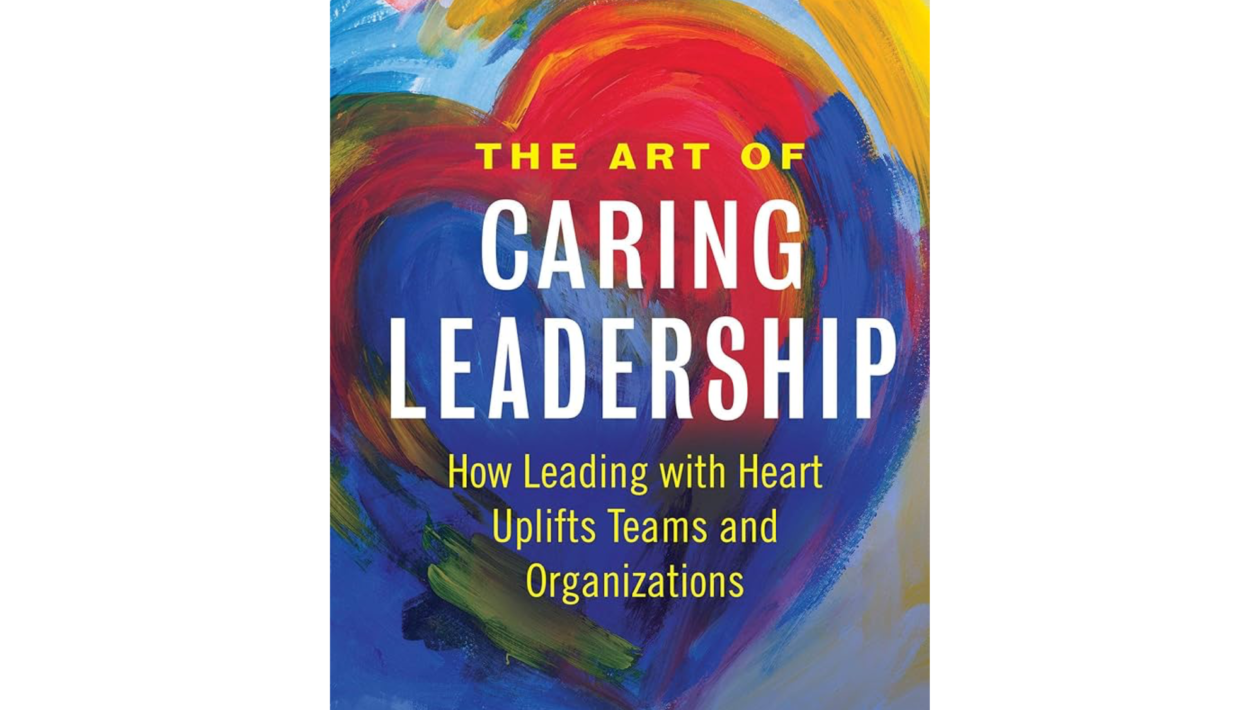By Heather R. Younger
Berrett-Koehler Publishers (2021)
Paperback, 192 pages
Reviewed by FREDDY DE LOS SANTOS
The Art of Caring Leadership: How Leading with Heart Uplifts Teams and Organizations by Heather Younger is not only a book on leadership; it offers real-life experience on the topic of caring leadership. Younger is host of the “Leadership with Heart” podcast (p. xvi). She has used her extensive research to bring us a clear understanding on the meaning of caring leadership.
It’s also inspired by my research and review of direct employee feedback. It highlights the strengths, trials, and practical advice of caring leaders on what they did to become leaders who are more attuned to themselves and how they impact those around them. (p. xvi)
Younger describes caring leadership as an art. As artists develop their creativity, caring leadership also is to be practiced, learned by people with leadership roles—as they perfect their skills, the impact around them becomes a reality. The intention is not only to learn the skills but to apply it for the benefit of others, which is the goal of leadership. The book emphasizes the importance of caring, a word that is key throughout the book.
The book presents nine principles for a person to follow in order to become a caring leader. The first principle is “Cultivate Self-Leadership Skills.” In order to lead others well, Younger suggests that a leader who wants to lead others would do well to invest in self-leadership skills; this is critical for the caring leader. She also suggests that a caring leader must invest in self-care first. Once the leader puts work into their skills first, they will be able to be a caring leader for others. Relying on the natural skills of talent is not enough; self-development is necessary to be a caring leader.
The second principle to become a caring leader is “Make Them Feel Important.” One concern among employees is that they are over-looked by those who are supposed to lead them. The book proposes that a leader who cares about the team will make sure to set time to be one-on-one with every individual to create relationships and be available to the needs and concerns of the team. The results of applying this principle are revealed in the behavior and productivity of the team members.
Chapter Three brings the third principle: “Look for the Greatness in Those We Lead.” The author invites leaders to take a deep look at the whole person. While many may focus on the person’s performance, a caring leader will discover abilities that may be beneficial for the overall enterprise.
The caring leader prioritizes recognizing and then growing the gifts and talents of those he or she leads. Instead of ignoring the signs of greatness in their people, these leaders search for it. Then, just as an artist might do with his or her color palette, they go out of their way to amplify the unique gifts of those they lead. (p. 49)
The fourth principle is “Involve Them.” A leader who sees allowing team members into the inner circle as a weakness will have difficulties solving key issues. Caring leaders will involve their people to gain support and solve problems.
In fact, when they involve their employees in overcoming whatever might be facing them and show vulnerability, it brings the team closer together, and it helps the team see how they can contribute to the solutions. It also gives the leader the grace to be imperfect when he shows that he needs help. (p. 61)
The fifth principle is to “Lead the Whole Person.” This chapter takes on a very delicate topic. In a culture where people value individualism and usually oppose consenting to allow anybody into their lives, a caring leader will be interested in what is happening in the personal lives of employees. “The caring leader understands that to get the most out of his relationships with those he leads, he must consider his employees’ lives in total, including what is happening in their lives outside of work” (p. 73).
The sixth principle, “Create a Listening Culture,” encourages the caring leader to practice active listening, acting upon employees’ requests. This creates a culture of confidence among the team, helping the leader to be a trusted person— approachable and understandable.
Caring leaders create a listening culture that is bidirectional, responsive, and supportive. They use the voices of their people to improve the workplace for all. These leaders know that listening alone is not enough. Employees feel powerful when they know that their feedback will be acted upon, even just some of the time. (p. 89)
Chapter Seven invites the caring leader to “Provide Them Safe Spaces.” Gaining the confidence of the employees is probably one of the most difficult tasks, since people naturally may fear retaliation if they share sensitive information that may be used against them. The book encourages a caring leader to create a space that is free of judgment. “The caring leader makes sure to create spaces free of judgment in which to have conversations where employees can feel psychologically safe and be protected from microaggressions” (p. 99).
The caring leader also “Empower[s] Them to Make Decisions.” It is a difficult task to pay attention to every detail of the organization; the task of micromanaging may exhaust the energy and abilities to perform of any leader. For that reason, the book submits the important principle of empowering others to make decisions, which will reflect on the big issues over time. “The caring leader is secure and self-confident enough to entrust others with this autonomy; in contrast, consider the insecure leader, who feels every task must be tightly controlled to ensure that his or her vision is fulfilled” (p. 117).
Chapter Nine bring us to the last principle: “Build Their Resilience.” A caring leader must have resilience for daily performance and to weather any sudden challenges the organization may present. However, this resilience is to be passed on to the team so that they are also able to respond appropriately to the challenges at hand. “The more quickly those you lead bounce back from challenges, the more quickly they can return to meaningful work that drives teams and organizations forward” (p. 127).
The book concludes with a solid statement that encircles the art of caring leadership:
When you are a leader, it is the love and the care that you put into your people, the focus, and the importance that you make them feel that enables them to lift up themselves. As a result, they do more for those around them. They feel better about themselves, and now they see the world differently. They are prepared to do more for their team and for you. (p. 148)
The Art of Caring Leadership is written for the business community. Nevertheless, it has practical application for the context of church administration and pastoral ministry. Since we lead people who at the same time have leadership roles in the church, college campus, schools, offices, etc., the application of the nine principles portrayed in the book apply to the ministry context. One can become a caring leader by cultivating these disciplines, and by adopting these principles, one can improve self-life skills while improving the lives of those being led.
Freddy De Los Santos is the senior pastor of the North Milwaukee Hispanic Church in the Wisconsin Conference of Seventh-day Adventists.

